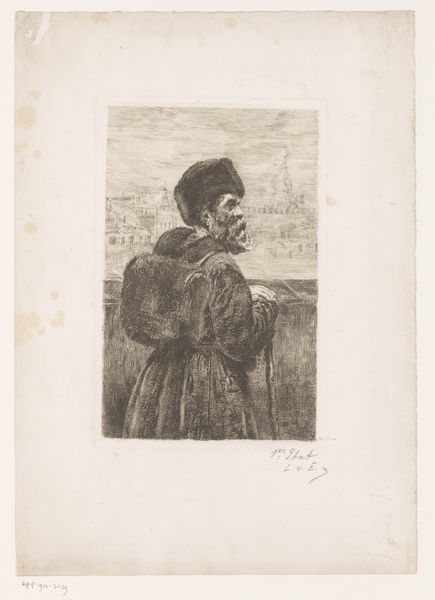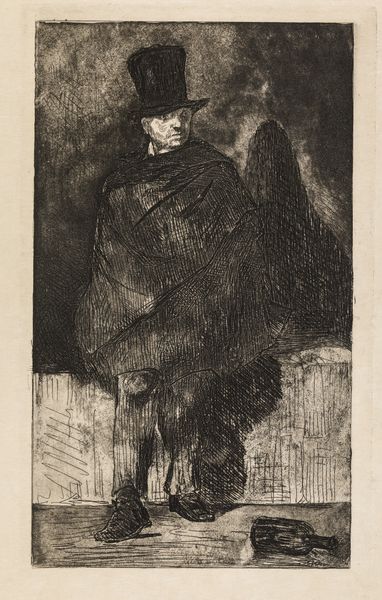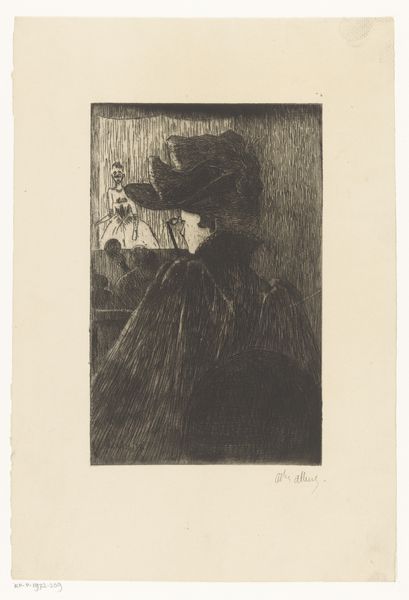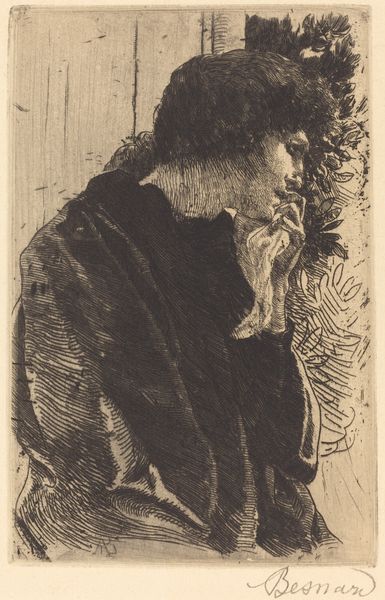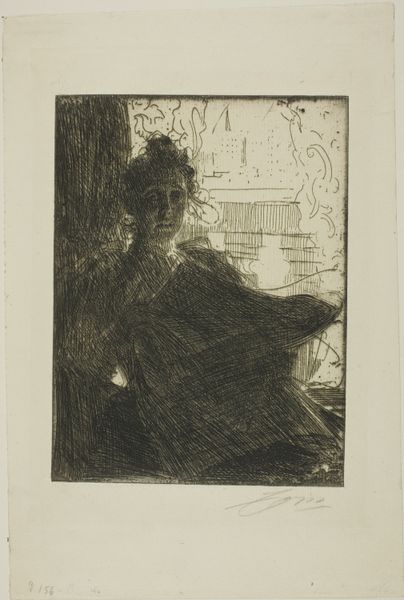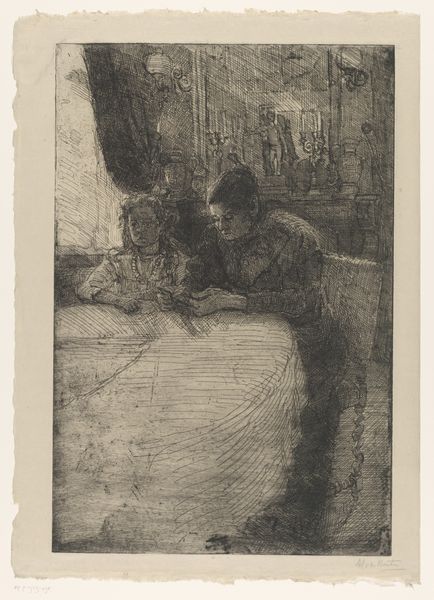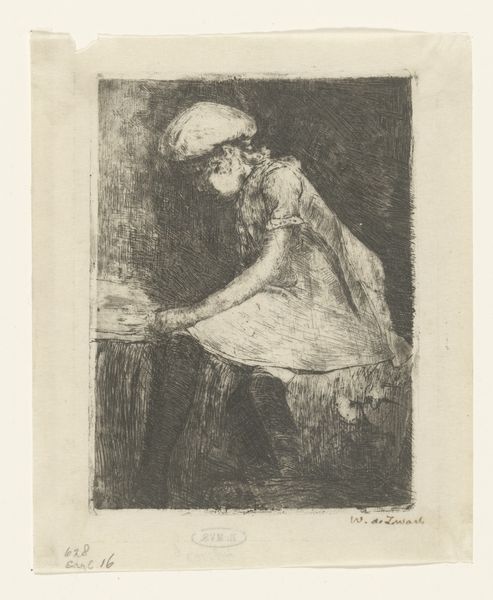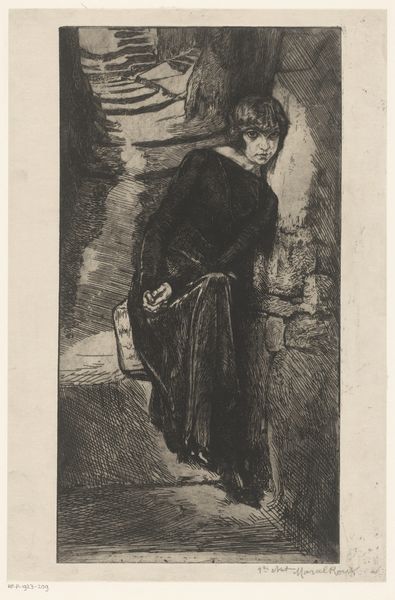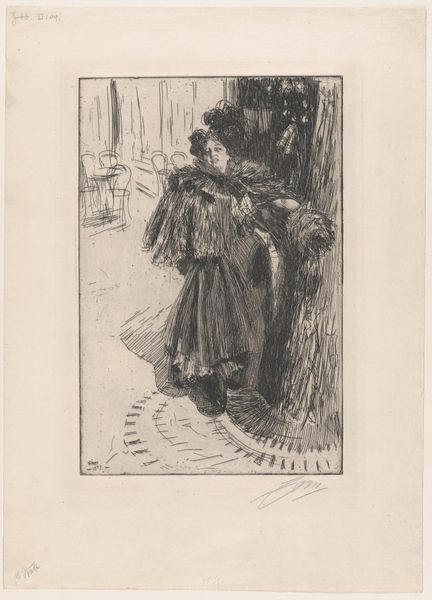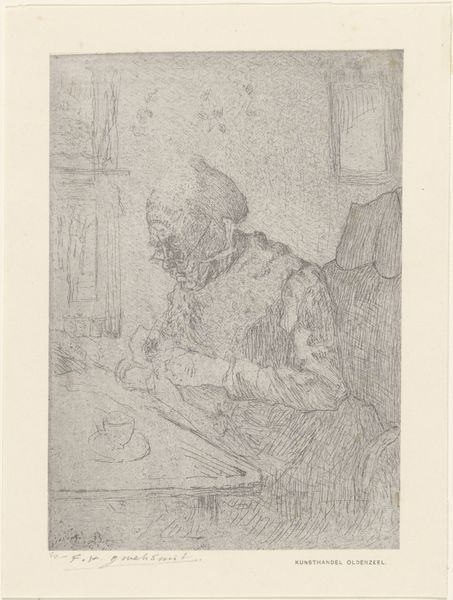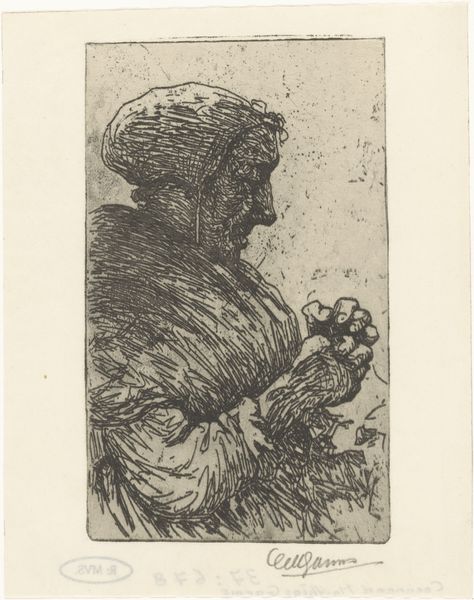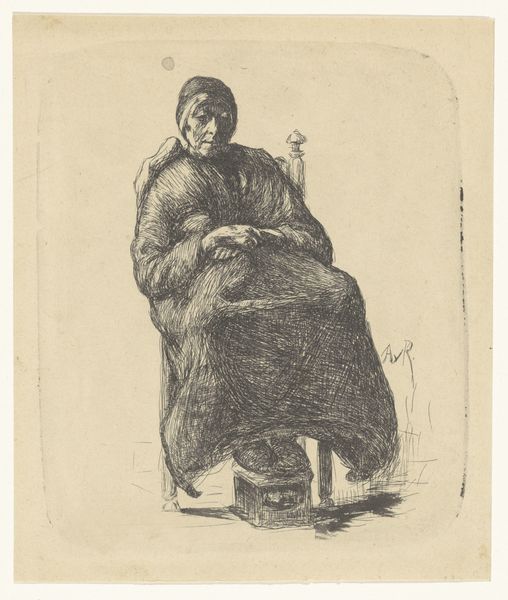
Russische man met wandelstok en Moskou op de achtergrond 1866 - 1910
0:00
0:00
louisvanengelen
Rijksmuseum
print, etching
#
portrait
#
pencil drawn
#
yellowing background
# print
#
etching
#
charcoal drawing
#
pencil drawing
#
cityscape
#
realism
Dimensions: height 237 mm, width 157 mm
Copyright: Rijks Museum: Open Domain
Curator: What strikes me immediately is the sense of quiet contemplation emanating from this image. There's a world-weariness, perhaps? Editor: It's evocative, definitely. This print, an etching actually, titled "Russische man met wandelstok en Moskou op de achtergrond"—"Russian man with walking stick and Moscow in the background"—was created by Louis van Engelen, sometime between 1866 and 1910. Curator: The figure is certainly dominant, almost monumental despite the medium being a print. The fur hat and coat—the textures rendered with such care. One wonders about his relationship to the city in the background. Editor: Right. Who is this man and what's his connection to Moscow? There's an implication here, this gaze upon the city...is it longing, resentment, belonging? Class dynamics perhaps? His clothing suggests a certain status, but it also hints at someone accustomed to the harsh realities of the Russian climate, of Russian society. Curator: Indeed. He’s positioned, framed even, looking out onto the city as if surveying his domain... or, conversely, kept outside its walls. We interpret such potent iconography based on our internal landscapes as much as the cultural signifiers. Editor: The backdrop—Moscow— is rendered almost dreamlike, hazy, which contrasts with the sharper details of the man. The city is there but out of reach. The walking stick might symbolize a journey or his state of mobility at this stage of life. The realism speaks volumes, yet also, intentionally, leaves much unsaid about that socio-economic and political milieu. Curator: Absolutely. The artist clearly understood the symbolic weight of rendering Moscow this way. The cityscape itself almost becomes a character, bearing silent witness. And this technique—etching— the act of physically engraving this man and the city, further imbues it with this… permanence, you might say. The fur hat is like a marker as much of identity as class. Editor: Precisely. What Engelen gives us here is a study of contrasts. Between the individual and the collective, the personal and the political, absence and presence, permanence and ephemerality. These dialogues, they challenge the simplicity that sometimes cloaks the past, as much as inform. Curator: A layered cultural artefact indeed, inviting endless interpretations through symbols which are ultimately familiar. I appreciate how the artist doesn't dictate one reading; this quietly offers room for introspective engagement.
Comments
No comments
Be the first to comment and join the conversation on the ultimate creative platform.
